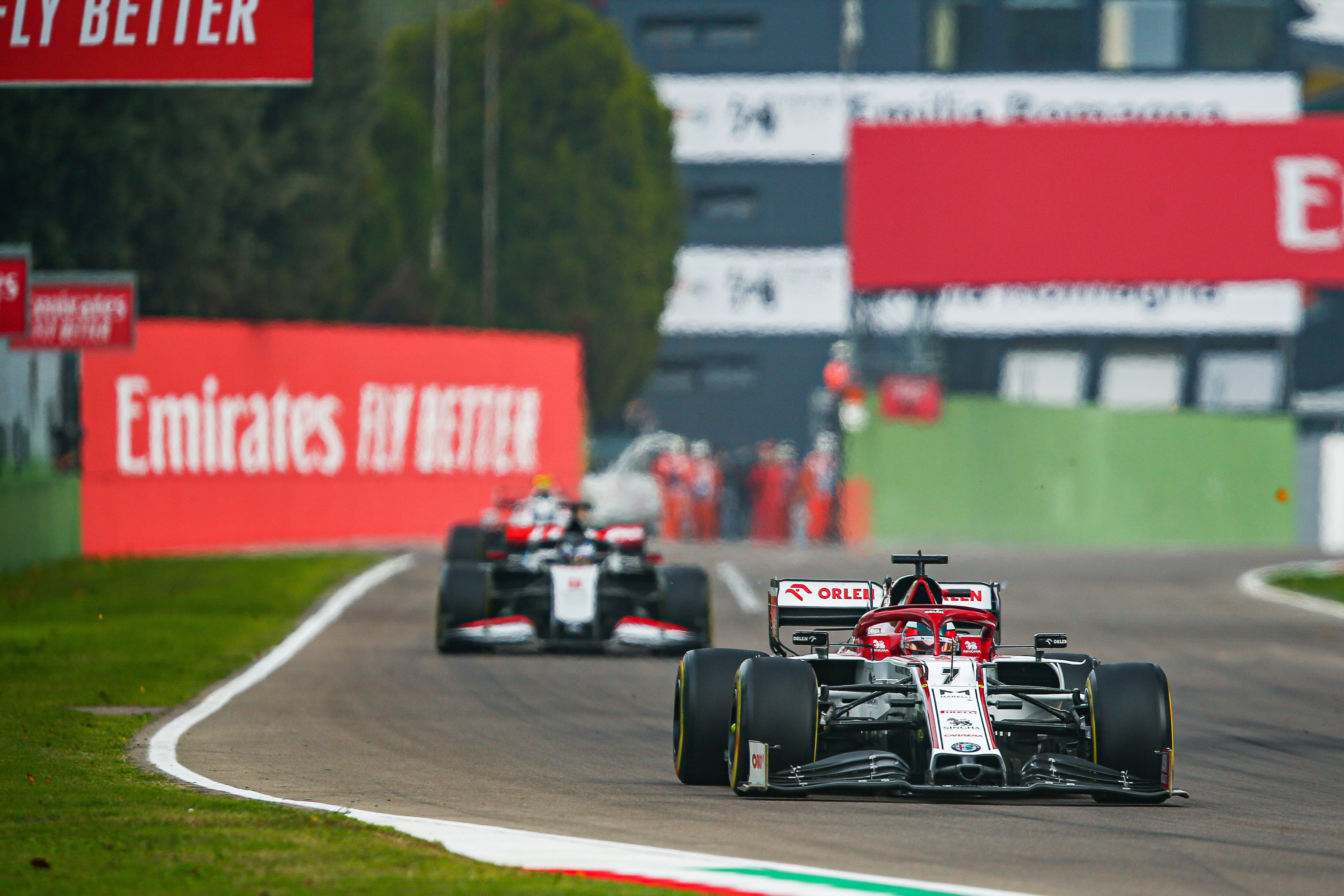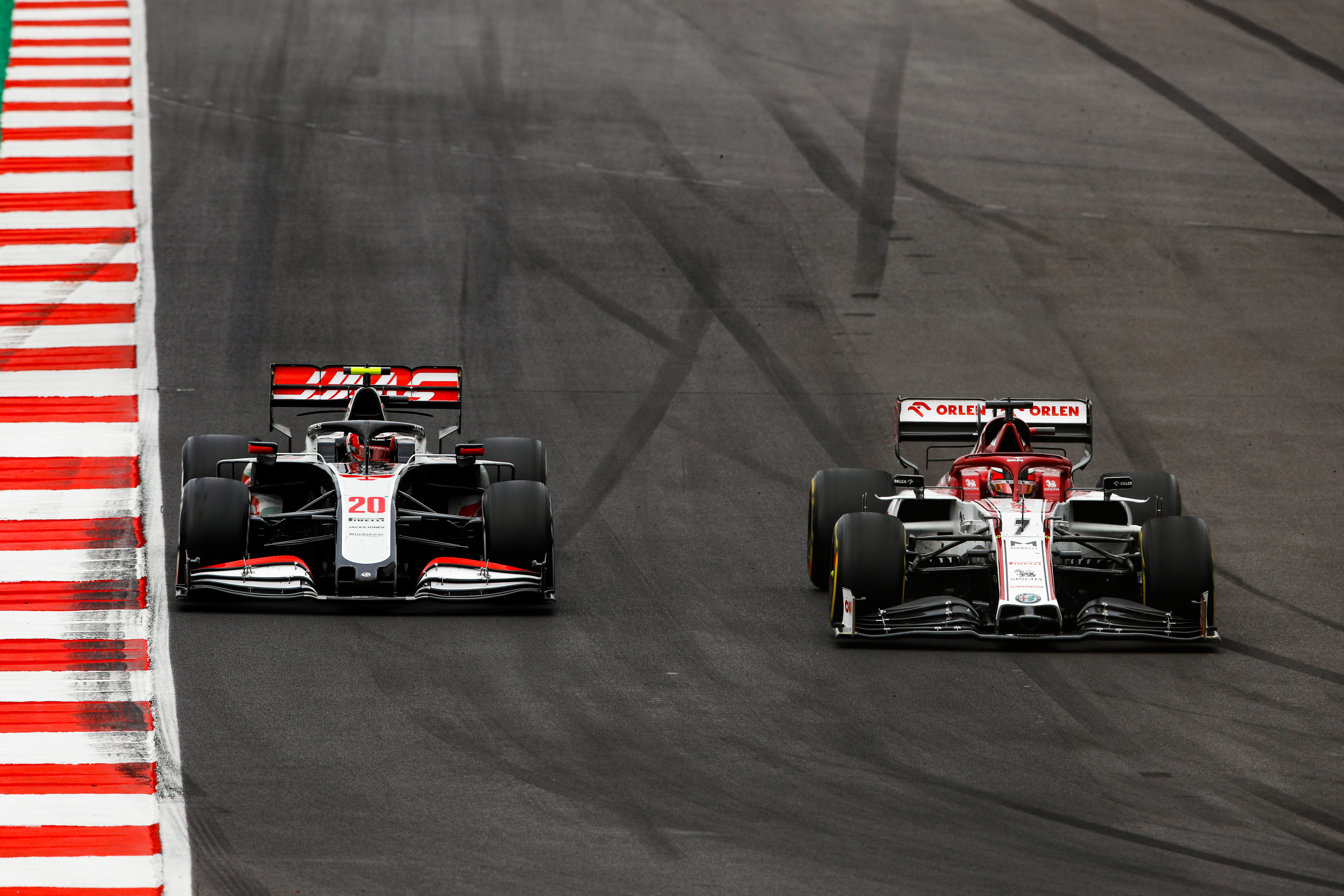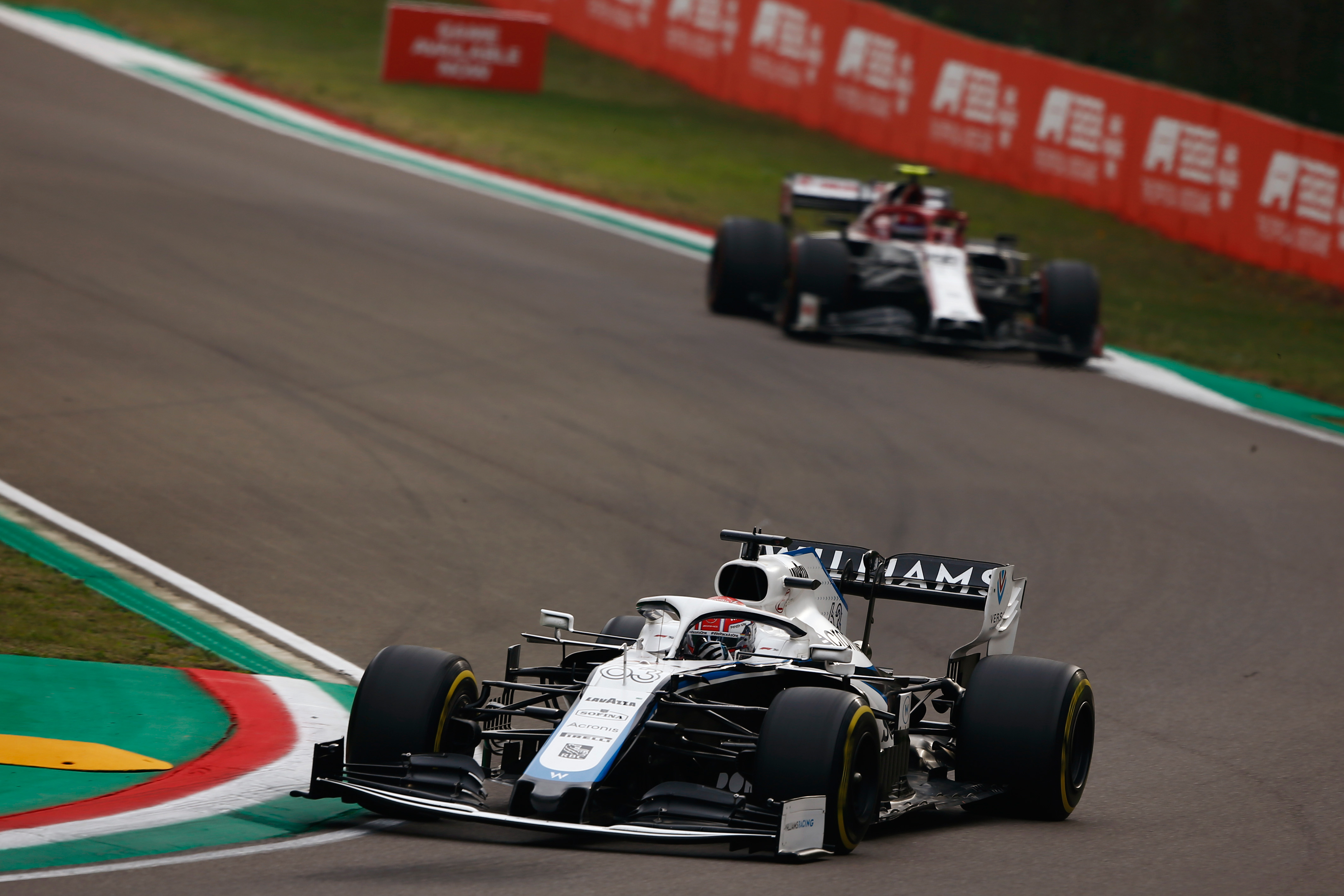The Alfa Romeo Formula 1 team is on the brink of winning a small, but significant, victory after its double-points finish in the recent Emilia Romagana Grand Prix as it now appears set to clinch eighth place in the constructors’ championship.
While hardly a coveted position, the Sauber-run Alfa team, Haas and Williams have been in a clear ‘Class C’ battle at the rear of the field since the start of the season with points a rarity. In total, they have managed just 13 points and six top-10 finishes between them.
Kimi Raikkonen and Antonio Giovinazzi finished ninth and 10th at Imola, meaning Alfa Romeo is unlikely to be caught over the final four races of the season without assistance from a freak result. After all, Haas is now five points behind in ninth but even to get on level terms it would have to score as many points as it has managed in the last 19 F1 races.
There is a financial reward attached to this, with the difference between eighth and 10th around the $5-6million mark in recent years. But this will be reduced dramatically for the 2020 championship given the hit F1’s revenues have taken thanks to the impact of the COVID-19 pandemic. The exact reduction in revenue is not yet clear, but as of the end of Q3 it stands at 44% of the same point in 2019 with the expectation that this should rise to around the 50% mark by the end of the year.
A small upside also exists for the teams losing the battle thanks to the aerodynamic testing regulations that will be introduced for 2021. This implements a sliding scale of windtunnel/CFD development that gives teams finishing lower in the constructors’ championship more time.

Next year, this will be applied in 2.5% increments of the standard allowance, with the constructors’ champion getting 90% of the nominal maximum and 10th place 112.5%. Alfa Romeo will therefore have less aero testing time by five percentage points compared to Williams, assuming the current positions remain unchanged.
But any suggestion a team would deliberately target finishing lower in the championship to benefit from this is nonsensical as the advantage to be gained is slender and would not justify the financial penalty. Not only that, but the lifeblood of an F1 team is competition and sacrificing any intensity in battling for every point would be a disastrous policy to pursue.
Alfa Romeo has generally been the strongest in this group, even though its qualifying performances have been very patchy. Its drivers have reached Q2 only four times, with Haas making it six times and Williams nine times. But often the drivers have struggled on Saturdays, including in the recent event at Imola where Raikkonen set a time good enough to reach Q2 only to have it deleted for a track-limits violation.
The race pace has been consistently good and an Alfa Romeo has been at the front of the ‘Class C’ teams nine times in 13 races this year. This is despite only being ahead in qualifying four times even though it often has the best underlying performance.
“Initially, we were very strong with qualifying and we made a step in qualifying even this race,” said Alfa Romeo head of trackside engineering Xevi Pujolar after the race at Imola.
“It might be that George is particularly good at outperforming the car over one lap” :: Dave Robson
“Kimi was not the perfect example, we were hoping to be in Q2 and it didn’t happen. It was just needing to put everything together between one lap and the race pace as well, so [understanding] the tyres and developing the car at the same time.
“That’s where we are making progress. But it’s very tight in the midfield with the other competitors and everyone is just trying a lot to just find every tenth of a second. It’s very critical.”

While Alfa Romeo has made improvements to its car over the season, the Haas VF-20 has not benefitted from any performance upgrades in 2020.
This was thanks to development work being suspended when the COVID-19 pandemic hit amid financial uncertainty, leaving the team to battle on with the package that it had.
The car has sporadically shown speed, usually when Romain Grosjean or Kevin Magnussen have had a strong weekend. But Grosjean recently declared it to be the slowest car in the field – something it’s difficult to argue with in recent events even if the Williams has often struggled on race day.
The Williams has become a little more more competitive on race day as the season has progressed after starting the season well off the Sunday pace, as proved by the fact George Russell’s crash under the safety car cost what was on course to be ninth place had he held position at the restart. He lost the same position to wheelspin at the second and final standing restart at Mugello.
Russell has been consistently the best qualifier among the group at the back and possesses what Williams head of vehicle performance Dave Robson has called “a natural talent” for building momentum up to qualifying then nailing it when it matters.
By maximising the available package in qualifying while rivals underachieve, a driver can effectively ‘outperform’ the car by putting it higher than it would be. The regression to the mean that follows in a race has also played a part in the team’s struggle to score points.

“We’ve tried quite hard and tried numerous things to rebalance the Saturday to Sunday pace, not with a huge amount of success sadly,” said Robson when this suggestion was put to him in Portugal.
“It might be that George is particularly good at outperforming the car over one lap and has still got some experience to gain on how to exploit the tyres over longer runs.”
The average pace of the three cars in qualifying for the season is covered by just 0.123% and given Alfa Romeo is the most erratic performer of all 10 teams over the season, that supports the suggestion its drivers often underperform on Saturdays. But over race distances, they have taken the best results.
The battle for eighth place isn’t over, but while eight points is a pittance compared to the tallies of the top seven teams it looks set to prove enough to win this low-key, but still significant, battle at the back.



